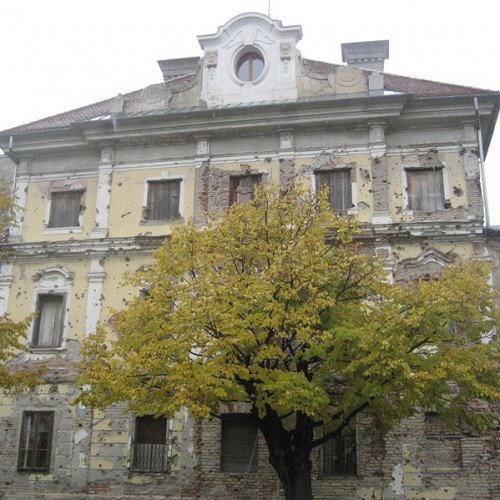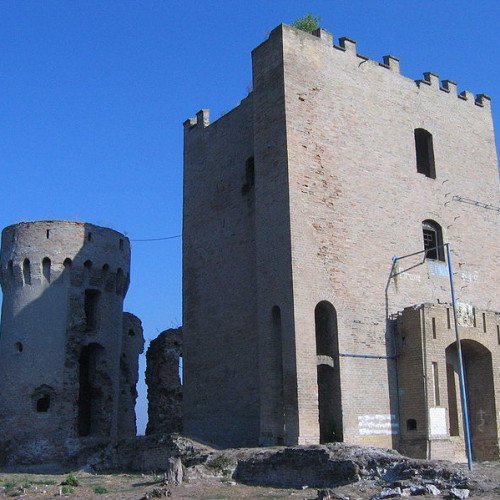Castles of "Croatia" ELTZ MANOR vs ERDUT CASTLE

ELTZ MANOR
Eltz Manor (Croatian: Dvorac Eltz, German: Schloss Eltz) is a Baroque palace in Vukovar, Croatia. The 18th-century manor is the location of the Vukovar City Museum. The manor, as it previously appeared, is depicted on the reverse of the Croatian 20 kuna banknote, issued in 1993 and 2001. The palace was destroyed in 1991 in the Croatian War of Independence. However, after four years of restorations, it was completely restored to its pre-war appearance in October 2011. In 1736, Philipp Karl von Eltz-Kempenich (1665–1743), the Archchancellor of the Holy Roman Empire and Prince-Archbishop of Mainz, purchased a Vukovar manor in Syrmia, in the eastern Kingdom of Slavonia, then part of the Habsburg Monarchy ruled by Emperor Charles VI. The palace was originally built between 1749 and 1751 by the Archchancellor's descendants of the German Catholic noble House of Eltz and was gradually extended over time. The estates near the Military Frontier were, however, exposed to raids by Ottoman troops and local Hajduk paramilitary forces. After the Yugoslav Partisans gained control over the country in late World War II, the manor was confiscated by the communist administration of Yugoslavia in 1944, and the family of Jakob Graf zu Eltz was forced to leave Vukovar. In 1990, he returned from Eltville to the newly established state of Croatia and became a member of the Sabor parliament at Zagreb. Eltz Manor, however, suffered a great deal of damage during the Croatian War of Independence, when it was bombarded by the Yugoslav People's Army during the Battle of Vukovar.
Statistics for this Xoptio

ERDUT CASTLE
Erdut Castle is a castle in Erdut, Croatia. Built in the 14th century, Erdut Castle lies on a bluff 70 metres above the Danube. The surrounding area below the bluff is completely flat, which provided an excellent view of any marauding hordes invading from the east. The settlement and castle is first mentioned as Ardud in 1335. The documents of the 15th century in Titel provost and the Bánffy family owned estate is mentioned in the Erdődy, dated 1552 and 1687 between the Turkish occupations. The castle was damaged in July 1991, during the Croatian War of Independence, in an artillery attack launched by the Yugoslav People's Army (JNA). In the aftermath of the attack, Croatian authorities sent a list of Croatia's cultural monuments marked with the protective sign of the Hague Convention for the Protection of Cultural Property in the Event of Armed Conflict to the Yugoslav Defence Ministry and all JNA headquarters.